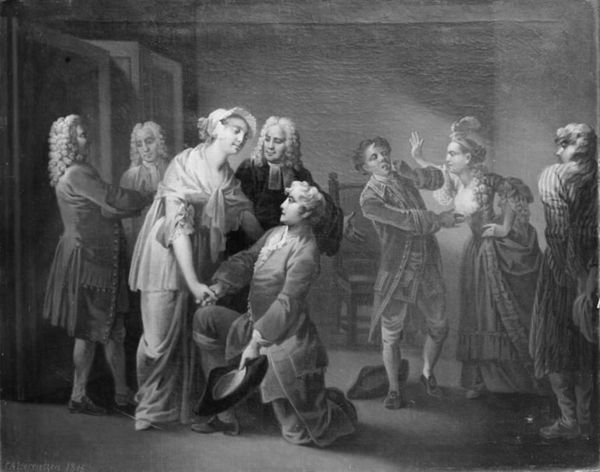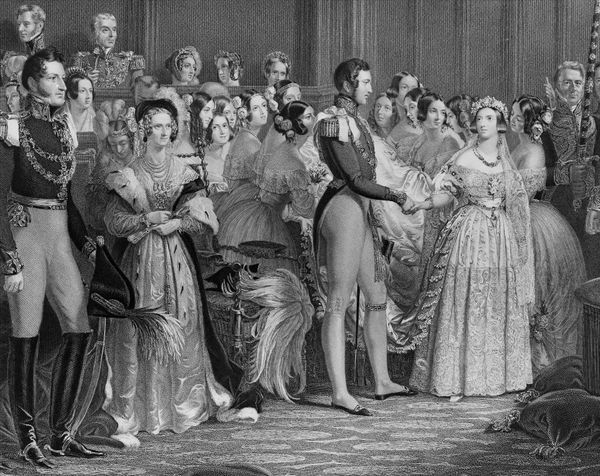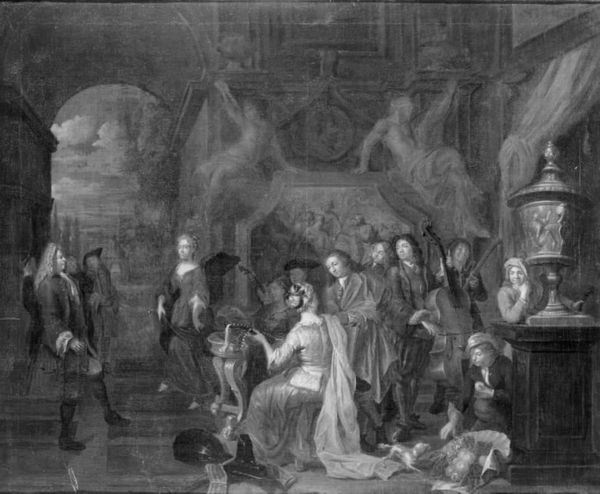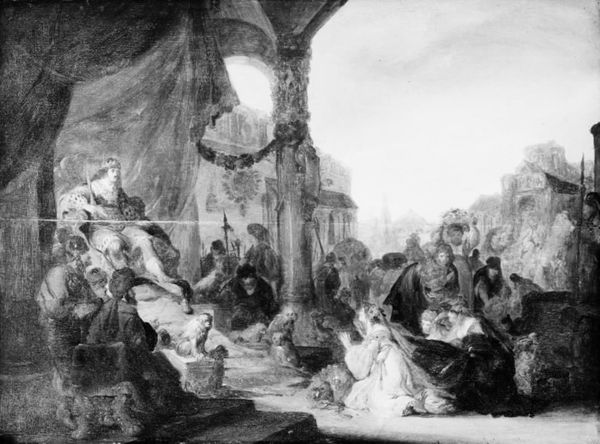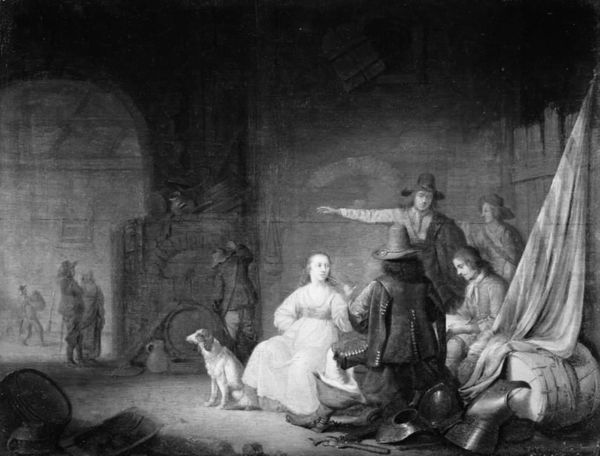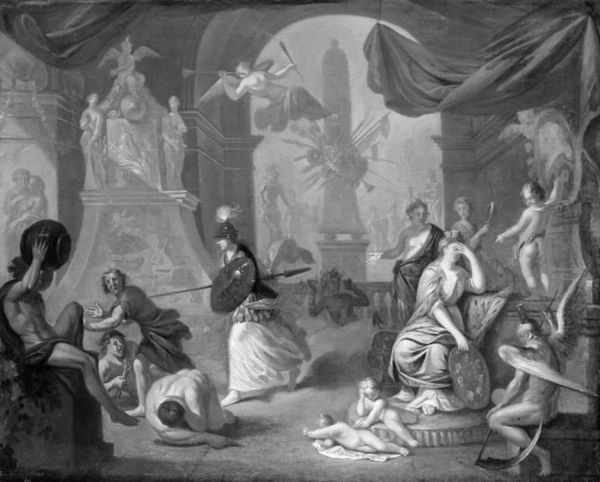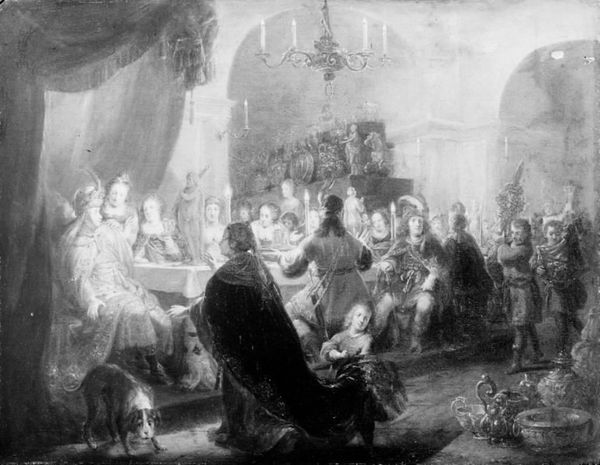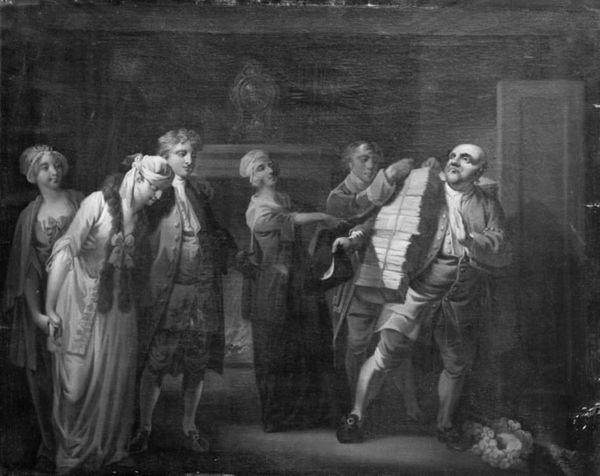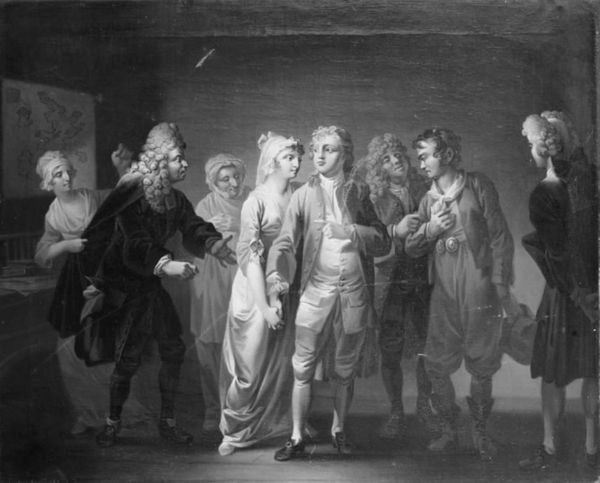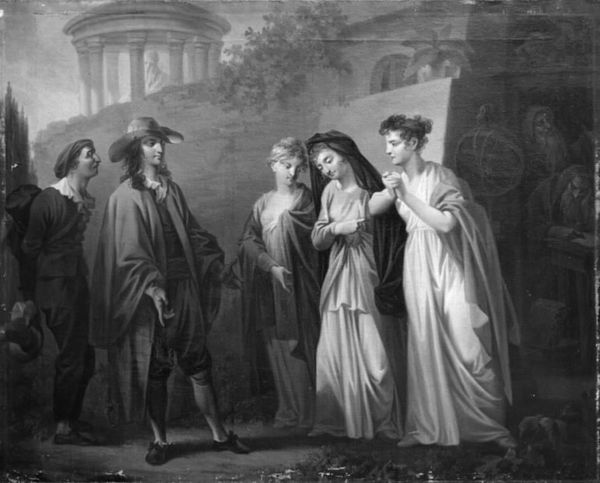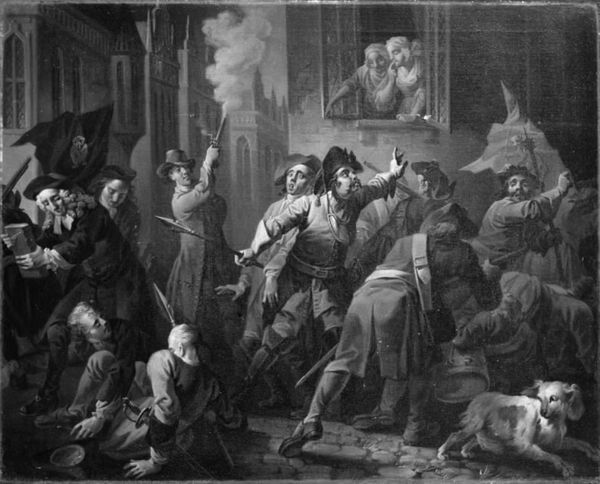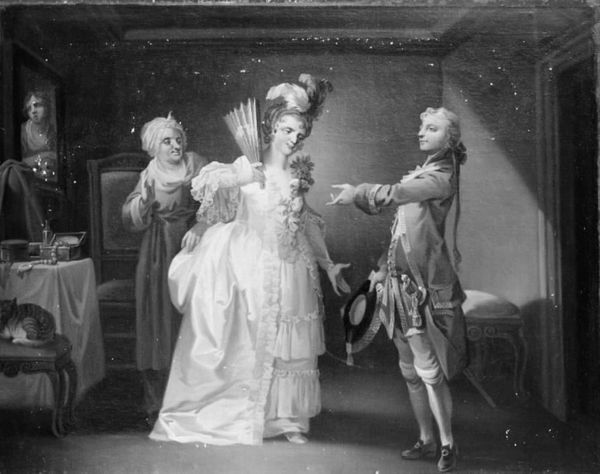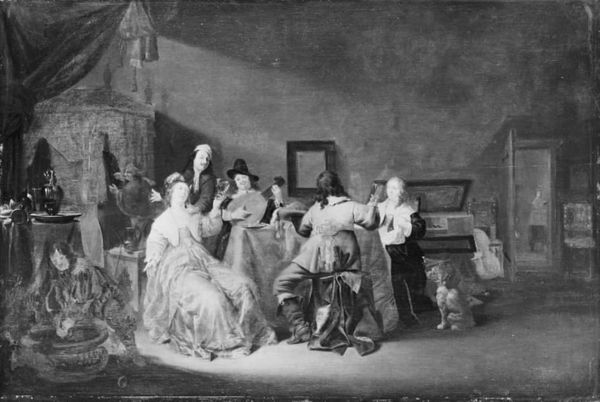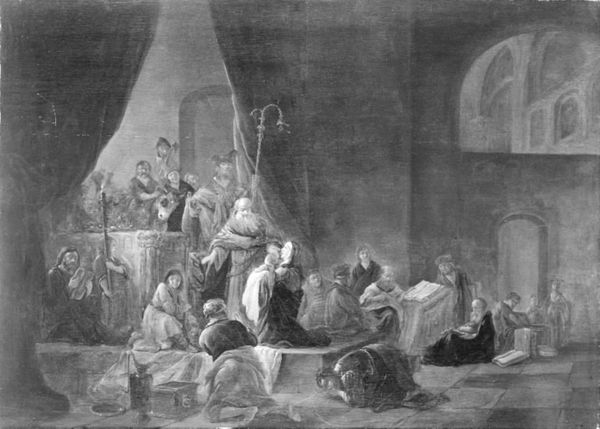
painting, canvas
#
portrait
#
narrative-art
#
painting
#
canvas
#
black and white
#
monochrome photography
#
19th century
#
genre-painting
#
history-painting
#
academic-art
#
monochrome
#
monochrome
Dimensions: 59 cm (height) x 73 cm (width) (Netto)
Editor: This painting, “Don Ranudo de Colibrados, V. akt, 4. scene,” attributed to C.A. Lorentzen, appears to date from between 1761 and 1828. It's a monochrome work on canvas. The staging, the elaborate costumes, it all feels so theatrical, but also stiff, almost awkward. What can you tell me about the story this image is trying to tell? Curator: It certainly does have that poised quality of a play doesn't it? Observe the recurring motifs: feathers, elaborate hats, and slightly strained upward gazes. Those aren’t just embellishments; they're markers of aspiration, perhaps a yearning for something higher, more refined. Editor: Higher how? Literally in status? Curator: Both literal and figurative. In the context of the late 18th and early 19th centuries, theater was more than entertainment. It was a stage—excuse the pun—for exploring social anxieties and class aspirations. Think of how clothing signified status. Does it remind you of anything specific? Editor: Moliere, maybe? Those sorts of comedies of manners...full of social climbing and satire. Curator: Precisely. Now consider that this is a narrative scene. Notice the contrasts – dark and light figures, active and passive participants. This artist uses monochrome to reduce visual distractions, amplifying emotional symbolism, almost like moral parables acted out on stage. The symbolic weight given to things like plumes, or a gesture can't be ignored. Editor: So, by stripping away color, we are invited to look more closely at the story being conveyed? The human interactions and perhaps a message about social mobility? Curator: Precisely. And within that story lies cultural memory, our collective understanding –and sometimes misunderstandings – of value, desire and social order. It is a record, in visual terms, of cultural codes and expectations. The symbolism offers more than initially meets the eye. Editor: I see, this makes me appreciate how much an image can encapsulate an era's concerns, even without a single splash of color. Curator: Indeed, sometimes absence – here, of colour – speaks volumes.
Comments
No comments
Be the first to comment and join the conversation on the ultimate creative platform.
